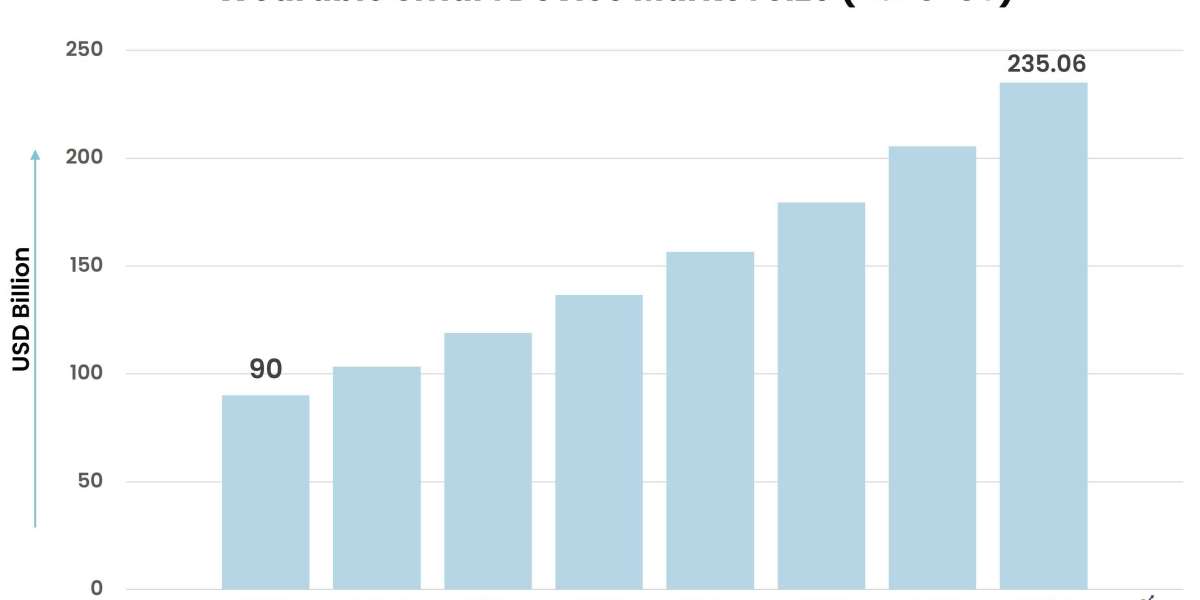The wearable smart device market has emerged as one of the most dynamic sectors in technology, offering immense growth potential across industries. From health monitoring to entertainment, these devices have redefined how users engage with technology. Let’s explore the key dynamics driving this market and the growth opportunities on the horizon.
According to Stratview Research, the wearable smart device market was estimated at USD 90 billion in 2023 and is likely to grow at a CAGR of 14.64% during 2024-2030 to reach USD 235.06 billion in 2030.
Key Market Dynamics
- Rising Health Awareness
One of the primary drivers of the wearable smart device market is the increasing consumer focus on health and wellness. Devices like fitness trackers and smartwatches have become essential tools for monitoring daily activity, heart rate, sleep quality, and more. With chronic diseases on the rise globally, wearable devices offer solutions for proactive health management, creating sustained demand.
- Technological Advancements
The incorporation of advanced technologies such as artificial intelligence (AI), Internet of Things (IoT), and augmented reality (AR) is revolutionizing the market. AI enhances the functionality of wearables by providing personalized health recommendations and predictive analytics, while IoT ensures seamless integration with smart ecosystems, driving user adoption.
- Affordability and Accessibility
The increasing availability of affordable wearable devices is making the technology accessible to a broader audience. This trend, driven by fierce competition among manufacturers, has significantly boosted global market penetration, especially in emerging economies.
- Growing Applications Across Industries
Beyond personal use, wearable smart devices are finding applications in industries such as healthcare, sports, education, and entertainment. For example, wearable medical devices support telemedicine by enabling remote patient monitoring, while AR/VR headsets transform training and gaming experiences.
Growth Opportunities
- Emerging Markets
Rapid urbanization and increasing smartphone penetration in regions like Asia-Pacific and Africa present vast growth opportunities. Governments in these regions are also investing in digital health initiatives, which complement wearable technology adoption.
- Expansion in Smart Healthcare
Healthcare wearables, including biosensors and smart patches, are expected to dominate the market in the coming years. These devices address critical healthcare challenges, such as continuous monitoring of patients with chronic illnesses, offering a significant growth avenue.
- Sustainability-Driven Innovation
Eco-friendly wearable devices, featuring sustainable materials and energy-efficient technologies, are gaining traction as consumers prioritize environmental responsibility. Companies that invest in such innovations stand to capture a growing segment of the market.
Conclusion
The global wearable smart device market is poised for exponential growth, driven by health awareness, technological innovation, and expanding applications. As new opportunities emerge in healthcare, entertainment, and sustainability, wearable technology will continue to evolve, reshaping consumer lifestyles and industrial practices alike.













